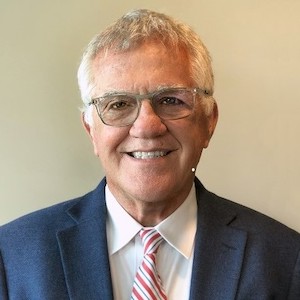March 2021
Impactful Learning: Innovations in Learning Science
A Q&A with VitalSource's Benny Johnson and Rachel Van Campenhout—shared from a recent VitalSource blog.
Q: How do you define impactful learning? How has this changed in the last 5-10 years?
Rachel: In addition to improving outcomes and mastery, I think impactful learning is about helping students learn how to learn better. Our learning environments are designed to maximize a student’s learning potential. If we can help students understand how learning techniques work and why they’re important, they can apply them across all areas of their education. With the data and technology we have today, why shoot for anything less?
Benny: Impactful learning is learning that improves outcomes in a meaningful way. Although it sounds trivial, if you put out a product that doesn’t move the needle on learning outcomes in a way that you care about, then it's not impactful. There are a lot of solutions that increase learning but not by very much. For us, it’s “go big or go home.”
Before I came to Acrobatiq, I developed intelligent tutoring systems. People always assumed that we wanted artificial intelligence (AI) to figure out how to teach chemistry, but that wasn’t it at all. We know how to teach chemistry. The problem is, how do you make software that does a reasonable enough facsimile of what a good chemistry teacher does when you can’t be there? It’s not teaching that has been transformed in the last five to ten years. What comes close to enabling a radical transformation is the technology that allows us to process large volumes of data quickly. That technology enables us to develop capable tools to deliver some of these best teaching practices that have been known forever.
Some of the things that we needed to achieve these goals require sophisticated technology, and some of those tools didn’t exist at the level we needed before five years ago, and certainly not ten years ago. We have known for a long time that doing practice gets you better grades, but we needed to be able to make technology that could automate what a good teacher does and what a good course designer does. The advances in AI and the amount of data available now make it possible for us to do things that we just couldn’t do five to ten years ago.
Q: What innovations in learning science research excite you?
Benny: A big innovation is the Doer Effect. We knew that practice was good for learning, but in the last few years, there have been advancements in more rigorously defining and assessing that. We long suspected that the Doer Effect was causal, but research by Ken Koedinger recently confirmed that relationship. We have been able to replicate those findings through our own research, so we know that the Doer Effect is causing better grades. It’s not the only way to do it, but by confirming it’s causal and not merely correlated, we connect the final dot. We can say, “We recommend you do this and you'll get better grades.”
Rachel: I’d agree. Replicating the Doer Effect findings in our courseware has been very exciting and gives us the utmost confidence in our approach. But I’m also excited about how we can innovate to help all students leverage this finding to a greater degree. Some of this will be through changing and shifting behaviors, such as how much and how often you engage in practice. Other ways could be through cognitive approaches, which I’m particularly jazzed about. In all my time with Acrobatiq, I’ve always been excited about the learning science approaches we’ve taken, but it really feels like an explosion of possibilities is ahead, one that could impact more students than ever before.
Q: Why is it difficult for education companies to use cognitive science?
Rachel: I imagine that if a company isn’t using learning science or cognitive science, most likely they don’t have the expertise, or if they do, they aren’t prepared to make decisions based on the research. If you don’t invest in the expertise in that area and aren’t prepared to act upon it, then it’s hard to utilize cognitive and learning science. The best way to engage the research in learning science and cognitive science is to have team members who have diverse experiences in those areas, are excited about learning themselves, and are focused on the central question of how to make learning most effective for students.
When we were building Acrobatiq, we had learning engineers who were responsible for making sure that what we were doing—from a content and learning environment perspective—was effective for students. They understood the research and knew how to implement it.
Part of it is a company culture of understanding the importance of learning science and how each individual member of a very diverse team can be a part of it. At VitalSource, we may not carry the learning engineer title anymore, but the learning engineering process is certainly alive and well in our team. It’s the way we maintain the student’s best interests in what we do.
Benny: Consider what we are trying to do now: At VitalSource, we are taking all the lessons we’ve learned and experience we have, and we are automating it. That’s hard for companies to do because you need the people with the specialized background to do it. Now, we have reached the next level of automating and reproducing positive learning outcomes using technology, which is pretty exciting. It’s hard enough to do it by hand, let alone write software to do it. But, if you can do that, it’s a competitive advantage.
Rachel: You must be willing to do something in a completely new way. In order to be able to do something innovative, you have to be able to take risks and be open to trying something radically different.
Benny: That’s a great point. It is research-driven. If doing things in a research-driven way is not a company’s forte, then you can't blame them for not taking that kind of approach. You must have the team to do the research and use that research to create things that haven't been created before. It takes a deep understanding of education research to apply AI successfully to these problems. It wouldn’t work to say, “AI is the answer, now what’s the question?” That's what makes it hard and requires a special expertise.
Q: How has learning science influenced the types of products and experiences that we are creating at VitalSource?
Benny: We do the opposite of saying, “AI is the answer, now how are we going to do education with AI?” At VitalSource, we take the research and learning science principles and figure out how to apply them across our vast catalog of titles and subjects. Instead of building something that works for only one specialty, we make sure that we’re building experiences that can be applied to any subject.
We look at all the different kinds of study techniques that people commonly use with an eye toward those that have been proven through research to get the biggest impact. What are the most impactful techniques, according to the data, not conventional wisdom? We start with learning principles that are known to improve learning gains and then figure out how to put them into practice with technology.
Rachel: I’m excited about being able to create more generalizable techniques for effective learning. We are working on creating an effective learning environment, whether it is for nursing, business, statistics, or any other subject. We should be able to do things that help every learner, and that’s where the intersection between research and learning is getting very exciting.
Q: How will this research impact VitalSource products and experiences in the future?
Rachel: We’re creating a holistic learning approach. It’s not just that we’re going to be good at one thing. We've focused on the Doer Effect because we know it’s effective. Moving forward, there are also a lot of other very exciting avenues of research and development that positively impact a student's learning experience, from the user interface to displaying data to incorporating prompts and nudging. With our learning science approach at VitalSource, we have the opportunity to make a holistic environment for students in which they can benefit from multiple different approaches to increase learning.
Benny Johnson, Ph.D., director of research and development, and Rachel Van Campenhout, learning science specialist, are both published researchers, experts in research and learning science, and lead VitalSource’s continued research efforts.

 Rob Abel, Ed.D. | February 2021
Rob Abel, Ed.D. | February 2021
 January 2021
January 2021
